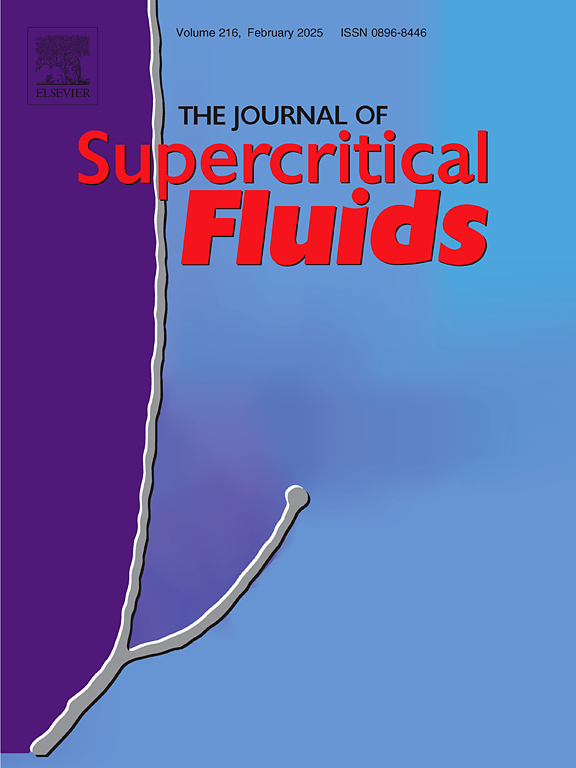Lignin valorization in biorefineries: A techno-economic analysis of a novel process for biolubricant production from lignin and waste cooking oil
IF 4.4
3区 工程技术
Q2 CHEMISTRY, PHYSICAL
引用次数: 0
Abstract
This work aims at preliminary evaluating the techno-economic feasibility of a biolubricant production process starting from lignin and waste cooking oil, to be integrated in a lignocellulosic biorefinery. A phenyl-branched FAMEs mixture is obtained, which exhibit improved lubricity and oxidative stability compared to standard FAMEs-based biolubricants. The product is obtained exploiting aromatic hydrocarbons from lignin, generated via hydrothermal liquefaction followed by selective hydrodeoxygenation. The economic analysis compares the minimum ethanol selling price (MESP) of a generic U.S. biorefinery processing 2000 tonne/day of corn stover with and without the integration of biolubricant production. Results indicate potential improvement in the biorefinery economic performance, with MESP decreasing from $0.798/L in the reference case (ethanol production only) to $0.697/L when the biolubricant process is included. Reduction in the price of waste cooking oil improves the performances, although the biolubricant selling price has a large impact on the economic profitability of the process.
木质素在生物炼制中的增值:利用木质素和废食用油生产生物润滑剂新工艺的技术经济分析
这项工作旨在初步评估从木质素和废食用油开始的生物润滑剂生产工艺的技术经济可行性,并将其整合到木质纤维素生物精炼厂中。得到了苯基支化的FAMEs混合物,与标准的FAMEs基生物润滑剂相比,该混合物具有更好的润滑性和氧化稳定性。该产品以木质素为原料,经水热液化、选择性加氢脱氧得到芳烃。经济分析比较了美国通用生物精炼厂处理2000吨/天玉米秸秆的最低乙醇销售价格(MESP),包括和不包括生物润滑剂生产。结果表明,生物精炼厂的经济效益有潜在的改善,MESP从参考案例(仅乙醇生产)的0.798美元/升下降到包括生物润滑剂过程的0.697美元/升。虽然生物润滑剂的销售价格对该工艺的经济盈利能力有很大影响,但废食用油价格的降低提高了性能。
本文章由计算机程序翻译,如有差异,请以英文原文为准。
求助全文
约1分钟内获得全文
求助全文
来源期刊

Journal of Supercritical Fluids
工程技术-工程:化工
CiteScore
7.60
自引率
10.30%
发文量
236
审稿时长
56 days
期刊介绍:
The Journal of Supercritical Fluids is an international journal devoted to the fundamental and applied aspects of supercritical fluids and processes. Its aim is to provide a focused platform for academic and industrial researchers to report their findings and to have ready access to the advances in this rapidly growing field. Its coverage is multidisciplinary and includes both basic and applied topics.
Thermodynamics and phase equilibria, reaction kinetics and rate processes, thermal and transport properties, and all topics related to processing such as separations (extraction, fractionation, purification, chromatography) nucleation and impregnation are within the scope. Accounts of specific engineering applications such as those encountered in food, fuel, natural products, minerals, pharmaceuticals and polymer industries are included. Topics related to high pressure equipment design, analytical techniques, sensors, and process control methodologies are also within the scope of the journal.
 求助内容:
求助内容: 应助结果提醒方式:
应助结果提醒方式:


